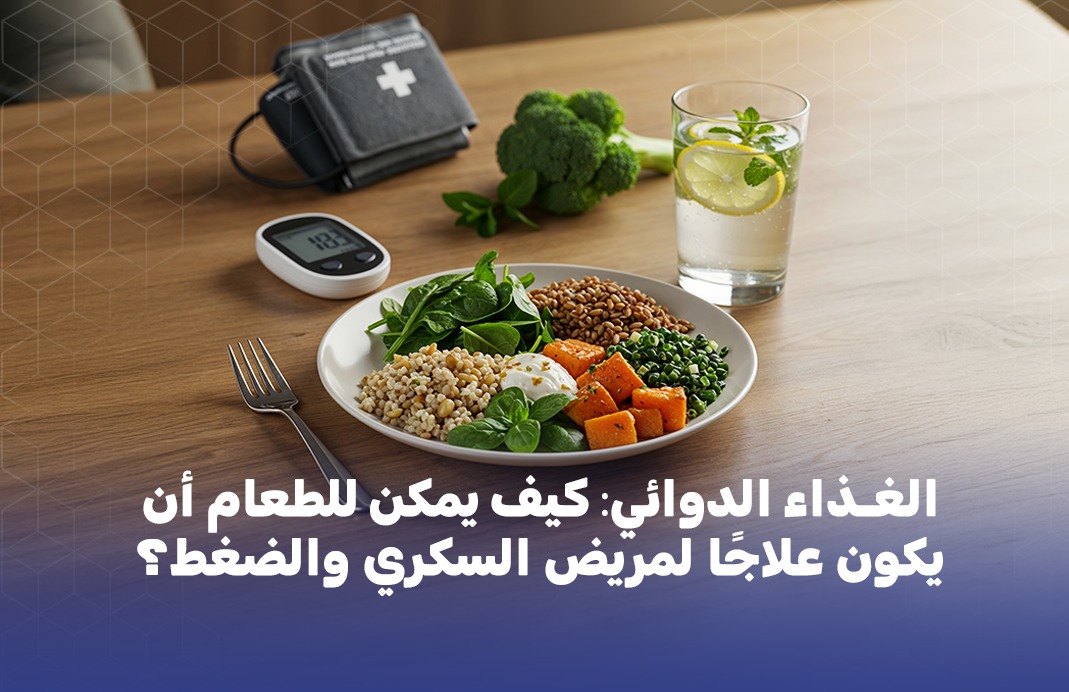It’s often said that “food is the first medicine”—a principle that holds especially true for those managing diabetes and high blood pressure. While medications are important, a well-balanced, targeted diet can be just as powerful in stabilizing blood sugar and regulating blood pressure, helping patients lead healthier and more balanced lives.
But how exactly does food shift from being simply a source of energy to becoming a therapeutic ally? And which foods can truly be called “natural medicine”?
🔹 The Dual Challenge: Managing Two Conditions with One Diet
Diabetes and hypertension often occur together. This combination makes dietary planning more complex:
Diabetics need to limit added sugars and harmful carbohydrates.
Hypertensive patients need to reduce sodium and unhealthy fats.
🎯 The solution lies in choosing foods that support both conditions—helping lower blood sugar and blood pressure simultaneously.
🔹 How Can Food Become a Remedy?
Food affects the body on a cellular level. Some nutrients improve insulin sensitivity, while others promote vascular health and reduce inflammation. With the right choices, the kitchen can be a natural pharmacy.
1️⃣ Top Foods That Support Both Blood Sugar & Blood Pressure
✅ Leafy Greens (Spinach, Arugula, Lettuce)
Rich in magnesium and potassium—vital for lowering blood pressure and supporting glucose metabolism.
✅ Legumes (Lentils, Chickpeas, Beans)
Packed with fiber and plant-based protein, helping regulate blood sugar and improve cholesterol levels.
✅ Nuts (Almonds, Walnuts, Unsalted Pistachios)
Provide healthy fats that reduce inflammation and support heart health.
✅ Oats & Whole Grains
High in soluble fiber, which slows glucose absorption and supports steady blood pressure.
✅ Fatty Fish (Salmon, Sardines, Tuna)
Rich in Omega-3s, which reduce insulin resistance and improve circulation.
2️⃣ Foods to Avoid
🚫 Processed Baked Goods
Contain hidden sugars and trans fats that worsen both blood sugar and blood pressure.
🚫 Processed Meats (Sausages, Deli Meats)
High in sodium and saturated fats—harmful for both diabetic and hypertensive individuals.
🚫 Sugary Beverages (Sodas, Sweetened Juices)
Spike insulin and contribute to weight gain and insulin resistance.
🚫 Fried & Fast Foods
Loaded with trans fats, which increase inflammation and elevate bad cholesterol.
🔹 Practical Strategies: Turning Food Into Medicine
✔ Split Your Meals
Eat 5–6 smaller meals daily to prevent blood sugar and pressure spikes.
✔ Avoid Extreme Hunger
Going too long without food can lead to overeating and sudden spikes in glucose and pressure.
✔ Control Portions
Even healthy foods can be harmful in large amounts. Balance is key.
✔ Cook Smart
Choose grilling, steaming, or boiling over frying to reduce unhealthy fat intake.
✔ Stay Hydrated
Water supports circulation, kidney health, and glucose control.
✅ Conclusion: Let Food Be Your Medicine
Food isn’t just fuel—it’s one of your most powerful tools for disease control. The right diet can minimize complications, reduce dependency on medication, and enhance quality of life.
🎯 Smart meal planning allows you to transform your kitchen into a wellness center, filled with healing nutrients and protective power.
💡 Remember: Health begins with your plate. Are you ready to use food as your daily medicine?
📚 References
- Mayo Clinic (2023) “Diabetes diet: Create your healthy-eating plan”, Mayo Clinic.
🔗 https://www.mayoclinic.org/ar/diseases-conditions/diabetes/in-depth/diabetes-diet/art-20044295 - Memorial Sloan Kettering Cancer Center (2023) “How to improve your blood sugar with your diet”, MSKCC.
🔗 https://www.mskcc.org/ar/cancer-care/patient-education/how-to-improve-your-blood-sugar-with-your-diet - Nature Middle East (2024) “Food as medicine: Clinical trials show health benefits of dietary interventions”, Nature Middle East.
🔗 https://www.natureasia.com/ar/nmiddleeast/article/10.1038/nmiddleeast.2024.158 - Hamad Bin Khalifa University (2024) “Dietary interventions for type 2 diabetes: Efficacy and challenges”, HBKU.
🔗 https://www.hbku.edu.qa/ar/news/dietary-interventions-for-type-2-diabetes-efficacy-and–challenges



